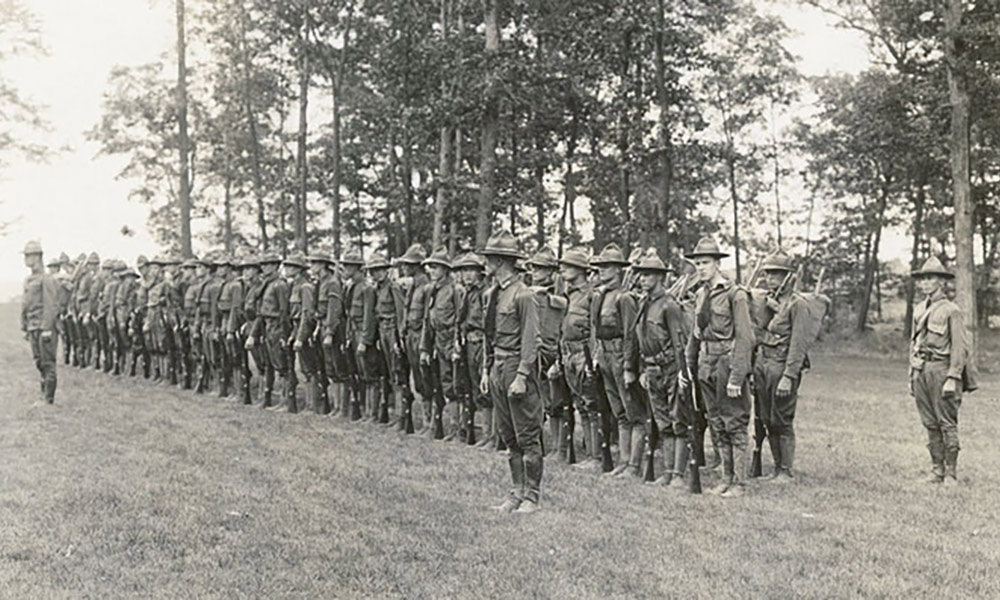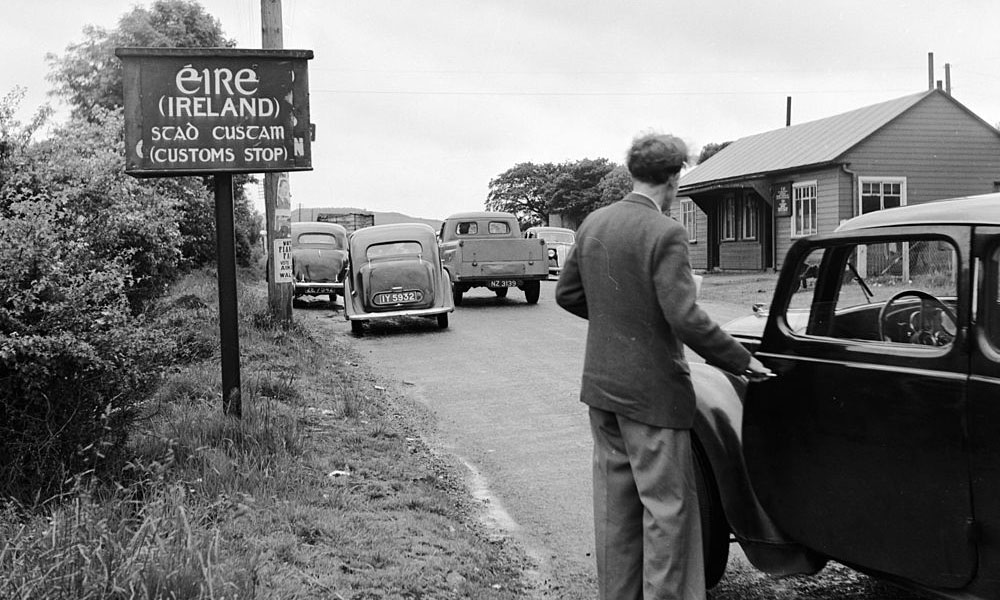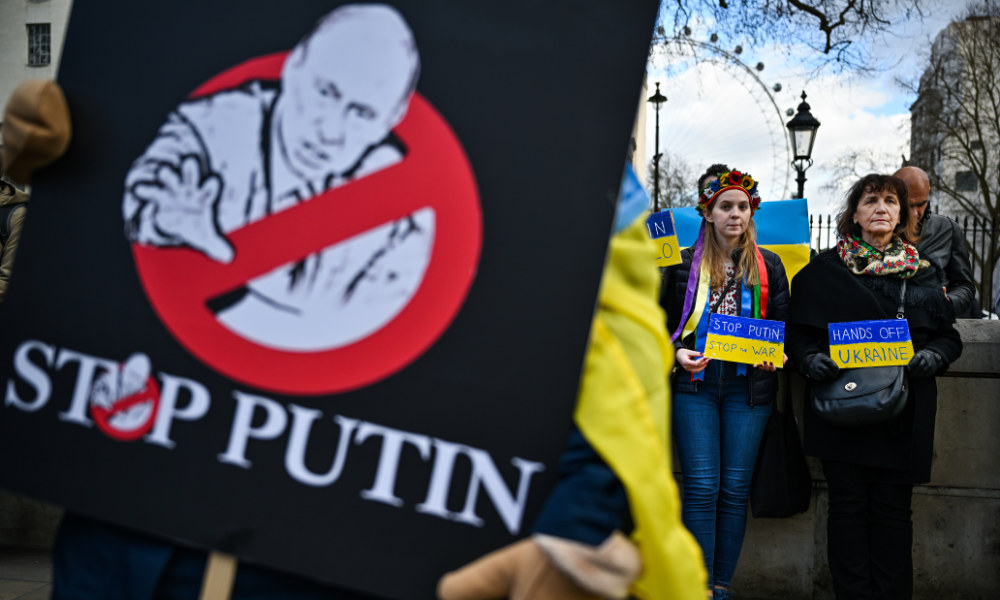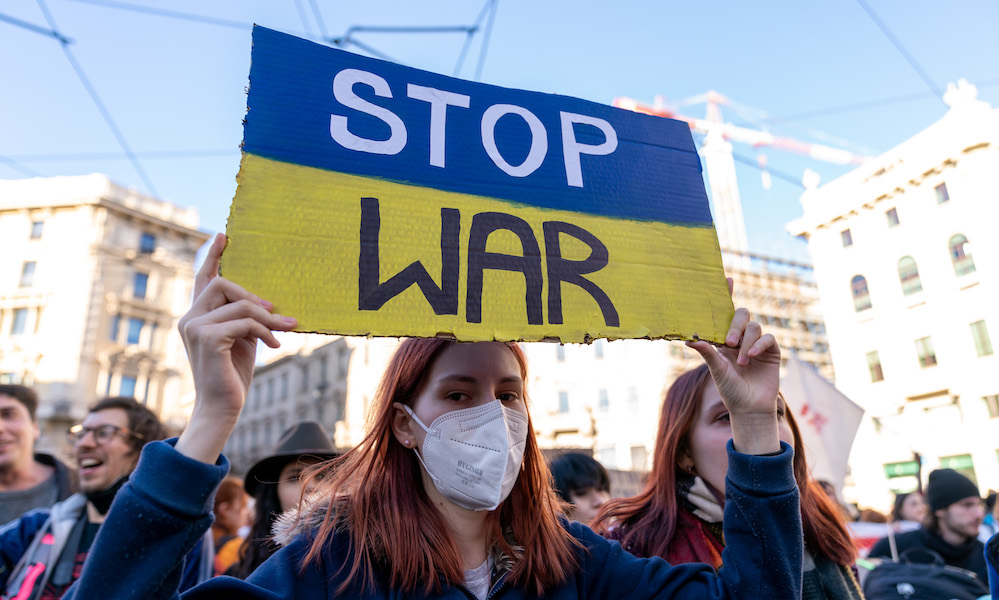What ultimately caused the U.S. to become involved in WW I
Why did the United states of america enter Globe State of war I?
 The Students Ground forces Training Corps at the University of Rochester in 1917. Nov 11, 2018 marks the 100th anniversary of the stop of the World War I. (University photo / Section of Rare Books, Special Collections, and Preservation)
The Students Ground forces Training Corps at the University of Rochester in 1917. Nov 11, 2018 marks the 100th anniversary of the stop of the World War I. (University photo / Section of Rare Books, Special Collections, and Preservation)

Hein Goemans.
The U.s.a. entered World War I because Germany embarked on a mortiferous chance.
Germany sank many American merchant ships around the British Isles which prompted the American entry into the state of war.
Rochester political scientist Hein Goemans answers the question why Germany was willing to risk American entry into the war.
Woodrow Wilson did not want war.
When Earth War I erupted in Europe in 1914, the 28th U.Southward. president pledged neutrality, in sync with prevailing American public opinion.
Simply while Wilson tried to avoid state of war for the next three years, favoring instead a negotiated collective approach to international stability, he was rapidly running out of options. Tensions heightened equally Deutschland tried to isolate Britain in 1915 and appear unrestricted attacks against all ships that entered the war zone around the British Isles.
In early April 1917, with the toll in sunken U.S. merchant ships and noncombatant casualties rising, Wilson asked Congress for "a war to end all wars" that would "brand the globe safety for republic." A hundred years ago, on Apr 6, 1917, Congress thus voted to declare state of war on Frg, joining the bloody battle—then optimistically called the "Peachy State of war."
"The U.S. declaration of state of war, in essence, was a recognition of the fact that Germany had chosen to impose a very risky run a risk on the U.South.—risky for Deutschland, simply the merely style they idea they could obtain the victory they needed at home," says Academy of Rochester associate professor of political science Hein Goemans.
A specialist in international relations and conflict, Goemans is the writer of War and Punishment: The Causes of War Termination and the Offset World State of war (Princeton Academy Press, 2000). Since then, he has also coauthored a book on leaders and war initiation, Leaders and International Conflict (Cambridge University Press, 2011).
IN THIS EPISODE OF THE QUADCAST: In an interview with associate professor of political science Hein Goemans, the good on disharmonize points out that Germany was enlightened that its unrestricted submarine warfare would provoke America to enter WWI.

A special "War Issue" of the Campus Times from June 1918 shows the affect of the Great War on University life. (University images / Section of Rare Books, Special Collections, and Preservation)
"The Germans were well aware that the U.S. could non and would not accept unrestricted submarine warfare, only launched information technology anyhow," says Goemans. "The U.S. declaration of war was thus already taken into account when the last determination for unrestricted submarine warfare was made in January 1917. Indeed, Hindenburg explicitly admitted the 24-hour interval before 'Nosotros count upon war with America.'"
Then why would the German language leadership under Paul von Hindenburg have such a big take chances?
"It was a gamble, which was very likely to hurt them in the long run," explains Goemans. "They thought the risk would open upwardly a window of opportunity in which they could defeat the British. If they defeated the British, so they could prevent Americans from coming to the mainland and they would have a victorious cease to the state of war."
Goemans argues that the Germans had seen how long it had taken the British soldiers from the time they arrived in France until the fourth dimension they were set for a major offensive at the Somme. The Germans calculated correctly that it would take the Americans at least every bit long to get their troops across the sea and ready to fight.
"The British thought: 'We fight the war past heroically stepping out of the trenches and locking artillery and looking threateningly at the Germans and thereby defeat them,' " Goemans says. "The British were shot downwards in large numbers, the Americans made the same fault. They refused to learn the technical and strategic lessons learned at not bad cost past the French and British."
Meanwhile, the High german ruling class, led by an brotherhood of aloof landowners and industrialists, was fighting for its very own survival, threatened by seismic social and political upheaval.
"A victorious catastrophe to the war was necessary for them because without victory, without spoils to divert those who had been loyal Germans—loyal to the old government—they would face up a revolution on the home front, and a revolution not unlike the 1 that the Russians had experienced," explains Goemans.
"You have to enquire also, 'Why does this form of dispute resolution work? Why does killing hundreds of millions of people brand an understanding possible where in that location was no agreement possible before?' "
While unrestricted submarine warfare is, of course, the textbook answer as to why the U.Due south. entered the state of war, there's too the infamous Zimmerman telegram.
Cabled by German language foreign minister Arthur Zimmermann in January 1917 to the Mexican diplomatic mission, the secret diplomatic communication was intercepted and decoded by British intelligence. In the telegram, Zimmermann proposed a military alliance between Deutschland, Mexico, and Japan—should the United States enter the war. It basically said, "If you desire to, we will aid you in the effort of helping yous regain some of your lost territories from the United States. The territory you lost in 1848 and later on," explains Goemans, who calls the telegram "a ludicrous proposal."
Mexico would be given Texas, Arizona, and New Mexico as spoils, according to the German program. While Goemans says he never constitute any indication in official notes and papers from the time that the U.S. government took this threat seriously, it even so became "a propaganda gift that could be used against the Germans more than it was a existent factor in the conclusion making of the Americans [to go to war]." However, in one case its contents were splashed across paper front pages, American public opinion turned strongly confronting Federal republic of germany, enflaming pro-state of war sentiments.
Three years before, long-smoldering rivalries in Europe over territory and borders had come to a caput with the assassination of the Archduke Franz Ferdinand of Austria and his married woman by a Serbian nationalist on June 28, 1914. The assassination, while ultimately a scapegoat, became the catalyst for the start of World War I, exactly ane month afterwards.
Past the stop of 1915, Austria-hungary, Bulgaria, Deutschland, and the Ottoman Empire were battling against the Allied Powers of Uk, France, Russia, Italy, Belgium, Serbia, Montenegro, and Japan.
Germany formally surrendered on November 11, 1918. In those nineteen months of U.S. appointment, more than two million American soldiers served on the battlefields of Western Europe—and 50,000 of them lost their lives.
WW1 dates
Earth War 1 was fought between July 28, 1914 – Nov xi, 1918
To Goemans, Globe State of war I illustrates a modernistic insight into the nature of war—that it basically takes ii sides to fight. One side can always capitulate or accede to the other side's demands, trying to avoid war. Information technology raises the question of why all players decide to fight.
"I study war non considering information technology's absurd, or because in that location are large explosions and big weapons, but considering information technology's truly horrific," says Goemans. "Just at the aforementioned time yous have to ask besides, 'Why does this form of dispute resolution piece of work? Why does killing hundreds of millions of people make an agreement possible where there was no agreement possible before?' "
Alas, the peace that followed the "state of war to terminate all wars," lasted only two decades.
Learn how you can apply to study at the University of Rochester.
Read more
 100 years on: The sectionalisation of Ireland explained
100 years on: The sectionalisation of Ireland explained
Stewart Weaver, a professor of history whose didactics interests include Slap-up Britain, Ireland, India, exploration, and the environment, offers an explainer on the partition of Ireland, which took place a century ago.
 Why is Putin invading Ukraine?
Why is Putin invading Ukraine?
Political scientist Hein Goemans, Rochester's expert on international conflicts, explains why Ukraine's fate might be tied to Putin'southward survival—and why this is the most unsafe geopolitical situation since Earth War 2.
 How to end the state of war in Ukraine
How to end the state of war in Ukraine
Rochester political scientist Hein Goemans, an expert on war termination, applies possible scenarios to Russia's invasion of Ukraine.
Category: Society & Civilization
Source: https://www.rochester.edu/newscenter/looking-back-100-years-u-s-enters-world-war-i-on-april-6-1917/
0 Response to "What ultimately caused the U.S. to become involved in WW I"
Post a Comment